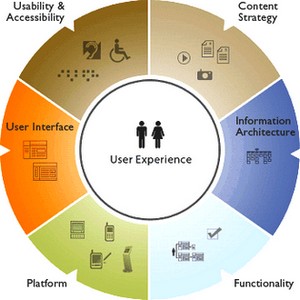There is a revolution going on with customers. The relationship they may have had with your mission and brand in the past has probably already changed. New technology (from a customer point of view) promises a new era of engagement, two way conversations, shared experiences and community. The relationship you want to have with your customers through these new devices and platforms and the actual state of customer engagement are not one and the same. In fact, it may be one sided and skewed towards you and not your customers.
Are you just showing up? I was struck by a school awards program I attended. Most of the awards were for some sort of academic accomplishment. One was for “just showing up” (perfect attendance). There didn’t seem to be a correlation between “just showing up” and accomplishments. We must examine the role that new technology can actually play in improving relationships, engagement and experiences. Our strategy can’t be to “just show up” on the trendy channels. We need to invest in outcomes and amazing experiences. We need to properly estimate the extent to which even the briefest of exchanges can improve the relationship.
How we interact with each other and companies is changing through big changes brought on by mobile, geo-location, social, real time, etc. We discover information differently, share it like never before, and connect in ways we never could have imaged even five years ago. Our customers are driving rapid adoption because of the radically different nature of the experience itself. Yes, it is a device that unlocks that experience but their expectation of the experience they want to have with us is changing as well. Think of how your customers have discovered self-expression, validation, communication, connections, knowledge and collaboration. Are they having those experiences with you?
All of this is moving away from a luxury to an expectation. As far as you know, that is exactly how customers are measuring their experience with you today. Those that are “winning” understand that and are actively creating those experiences. That level of community experience is a lure for attention. It takes more than “just showing up” on the right channel and right device. Experience is much more than that. Experience is about being a part of a movement.
Here is a critical question. Do you have a user (customer) experience team? To a great extent, the user experience (from a digital point of view) is King. This is not just about website design. It is about the art and science of shaping how your customers feel about your programs, products and services they engage with. Unless the design is intentional, the customer will have a sub-optimal experience with your mission. User experience is the critical enabler of meaningful and shareable experiences. The team’s role in your future can’t be underestimated. An empowered user experience team offers you a powerful competitive advantage. So I will ask it again, “Do you have a talented user experience team?”
User experience, and the professionals that staff it, go way beyond design and development. Among senior executives and the C-Suite, user experience is probably either misunderstood, undervalued or perhaps not acknowledged at all. The user experience team should be the most invested in and powerful team you have. They should be the most informed and most capable at improving the customer experiences, relationships, loyalty and overall income.
To the connected customer, the experience is everything. They don’t just donate. They don’t just surf your sites. They don’t just randomly engage in social networks. They want experiences. They want to connect with a community. They will invest in the experience and embrace your community if you provide it. They will share that experience with others who will want to connect with your mission as well.
Without powerful user experience professionals, you don’t have a competitive advantage. It is how you will gain and retain mission loyalty now and in the future. Without thoughtful and intentional user experiences, connected customers will meander without direction. Their attention will wane and their loyalty along with it.


Pingback: Why transformational leadership and a people focus is so important to a customer focus | Center for Digital Business Transformation